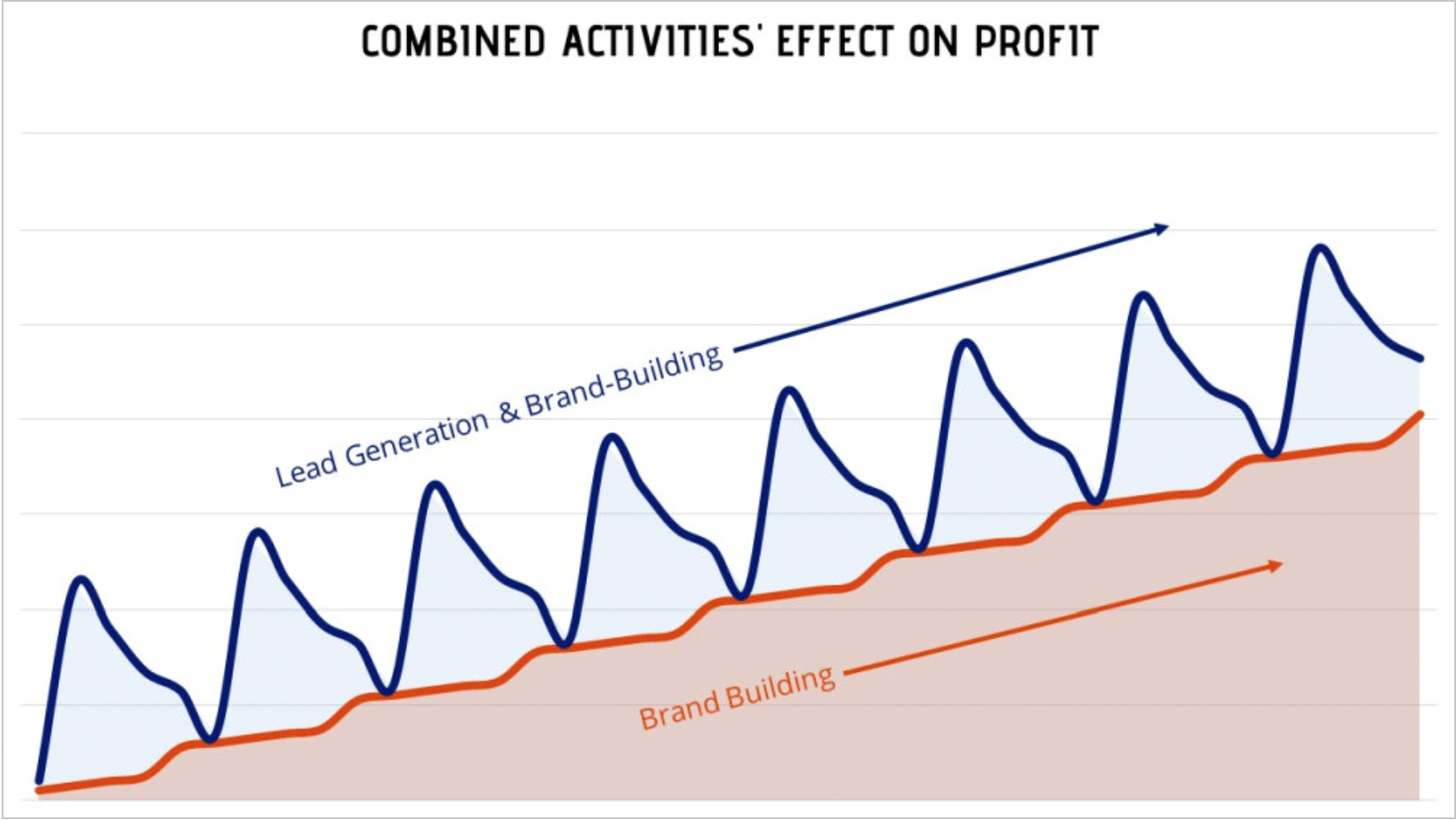Demand generation strategy: Brand marketing vs. product marketing

Behrad Mirafshar, the CEO and founder of Bonanza Studios, discusses the vital differences between brand and product marketing, and why you can’t replace one with the other.
Brand marketing is the foundation of your brand, while product marketing is the tool that you use to bring your brand to life. You can't replace one with the other.
Marketing teams often feel pressure to impress their managers, leading them to focus on short-term strategies that show immediate results. However, generating demand through paid advertising is not a sustainable solution. It may give you temporary bumps in sales, but it will not build a loyal customer base.

Source: https://www.forbesbaxter.co.uk/marketing-strategy/
Great brands use a combination of brand marketing and product marketing to achieve success. Brand marketing communicates the values and ideals that the brand stands for, while product marketing highlights the benefits of using the product.
When you market a product, you want to effectively communicate how your life will be different if you use it. When you promote a brand, you are suggesting a lifestyle and advocating for a specific way of living and looking at the world.
In simple terms, brand marketing helps your brand create a loyal customer base that stays connected with your brand because it helps them navigate their world. These customers will buy your product even if there are better alternatives out there.
If you have a brand with a set of inspiring ideals, you can amplify it with product marketing. However, the vice versa is not true. A brand that solely relies on product marketing will eventually be outcompeted because it will come across a competitor with a better/cheaper offering.
Despite knowing the difference between brand marketing and product marketing, many marketers still don't do a proper job of brand marketing. Why?
Because branding and brand marketing require passion and love. You need to be genuinely passionate about the cause you're pursuing in order to create a brand that captures the hearts and minds of many.
A lot of brands grow out of solving a real need and capture a majority of the market share. However, they fail to sustain their growth and eventually shrink and perish. When you're in the lives of many people, you have a unique opportunity to turn your brand into a lifestyle brand, even if you're in the B2B sector. Slack, Mailchimp and Trello are great examples of B2B brands that have become household names.
Remember, you can't win customer loyalty with money. But you can with an inspiring and moving mission.
Here's the recipe for turning your brand into a lifestyle brand leveraging brand and product marketing:
- Find a niche: Identify a specific group of people with shared interests or needs.
- Resonate with their pain points: Understand their challenges and frustrations.
- Become a champion of their needs: Make it your mission to help them solve their problems.
- Offer outstanding products and services: Provide solutions that genuinely improve their lives.
- Talk about your mission: Use brand marketing and product marketing to communicate your mission and values.
- Use organic and paid media: Utilise a mix of organic (blog articles, podcasts, events, magazines, etc.) and paid advertising to reach your target audience.
- Build a community: Create a space (offline or online or both) where your customers can connect with each other and with your brand.
- Serve your community continuously: Provide ongoing support and resources to your community members.
- Grow your community: Expand your reach and attract new members to your community.
- Serve people with wider needs: As your community grows, consider expanding your offerings to address a broader range of needs.
Regardless of the nature of your business, B2B or B2C, you can form a community (aka tribe) around your brand. Your brand and its mission (e.g. Nike, nothing is impossible) inform all the future initiatives and new products and services.
By following these steps, you can turn your brand into a lifestyle brand that people love and trust.
Bonanza Studios' website may be found here.













